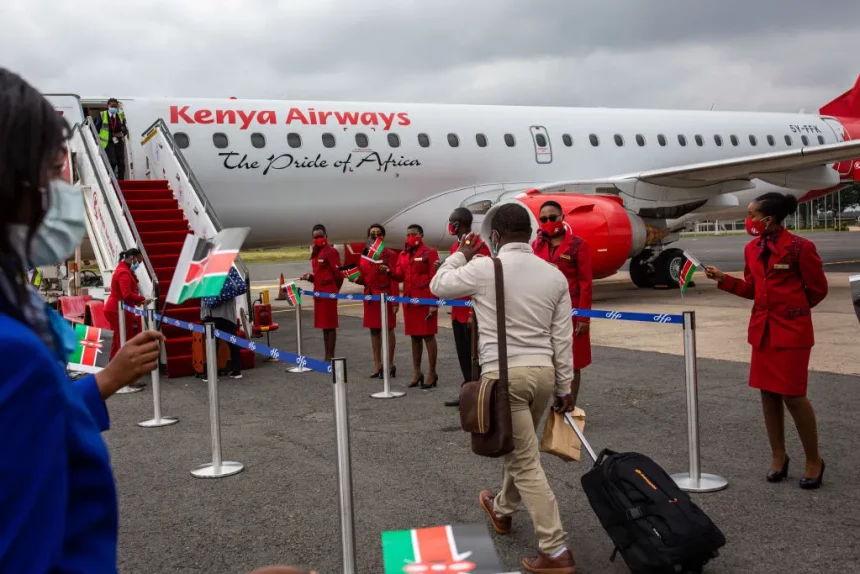President William Ruto of Kenya recently announced that Kenya’s borders would be open to visitors from the entirety of Africa, with no visas required, by the end of 2023. He said
When people cannot travel, business people cannot travel, entrepreneurs cannot travel, we all become net losers.
A few days later, President Paul Kagame of Rwanda followed suit, saying all Africans would be able to enter Rwanda without visas.
Neither Kenya nor Rwanda will be the first. By the end of 2022, Benin, The Gambia and Seychelles had already implemented a system of visa-free access for all Africans. Perhaps more will follow soon. Some regions, some sub-regional groups and some bilateral arrangements have also resulted in visa-free access and even passport-free access in certain cases.
Within the broader East African Community, Uganda, Rwanda and Kenya allow cross border travel without passports. Botswana and Namibia recently signed a similar agreement.
Despite this progress, by the end of 2022 only 27% of African routes allowed Africans to travel visa-free.
Actions such as those of Kenya and Rwanda take the African Union’s agenda further. Regularising freer movement of people across African borders is one of the continent’s great developmental challenges. It is one of the flagship projects of the African Union’s Agenda 2063.
But even if all African countries no longer required visas from Africans, this would not necessarily give the visitors a right to apply for jobs, establish a business or build a home in the receiving country. The 2018 African Union Free Movement of Persons protocol aims for full free movement, through three phases – entry, residence and establishment. This includes full economic rights, including employment. It has not been widely ratified, however.
Our new study of migration trends underscores the potential contributions of migration to economic development in the countries of origin and destination. This is realised through the transfer of skills, knowledge and remittances. The study also shows that intra-African migration is firmly rooted in geographical, social and economic ties. Movement is predominantly within regions, and moderately between them.
Free trade and movement of people
African Union policies support freer intracontinental trade, investment and movement of people to promote the continent’s economic, social and political development. The continent has made progress on the aspects of the African Continental Free Trade Agreement that deal with trade and investment. There hasn’t been much progress on the free movement of people. And yet the success of the trade agreement requires freer movement of people.
This interdependence between trade and free movement of people was the focus of the recent Pan-African Forum on Migration held in Gaborone, the Botswana capital. The forum brings together African Union member states, the continent’s regional economic communities, UN agencies and intergovernmental organisations to deliberate on migration and human mobility issues in Africa.
The conference noted that most African countries had failed to ratify the African Union’s Free Movement of Persons protocol. At the same time, there was evidence of improvements in policies and practices at national, bilateral and multilateral levels that facilitate the freer movement of Africans.
Apart from recent announcements by Rwanda and Kenya, other instances would be a growing number of reciprocal arrangements between countries.
Regional migration a norm
The history of African statehood, with strong social ties across national boundaries, makes regional mobility a norm rather than an exception. This can be seen from the migration routes, mostly found within the same regions and which proceed in both directions.
For example, Burkina Faso to Côte d’Ivoire is the largest migrant route in the continent and within the Economic Community of West Africa (Ecowas) – the economic bloc of 15 west African states. Côte d’Ivoire to Burkina Faso is equally popular. This trend is ubiquitous throughout the continent, except within the Southern African Development Community region, where most migrant routes tend to lead to South Africa.
Among the major regional economic communities, Ecowas has the most intense regional migration. It is followed by the Southern African Development Community and the East African Community. By contrast, Ecowas has the least inter-regional migration while the East African Community has the most.
Variations in development across Africa mean that some countries experience contrasting patterns, particularly in extra-continental migration. While most African migrants migrate to and from other parts of the continent, in middle income countries such as South Africa, Kenya and Nigeria extra-continental emigration is greater.
Immigration and emigration are generally low in low income countries and higher in middle income countries. In rich countries, people tend not to emigrate. The relatively low level of migration in Africa follows this pattern.
Only 14% of total world emigrants come from Africa. The average migrant density, or percentage of migrants living on the continent, is 1.89% compared to a global average of 3.6% where Europe and North America are at 12% and 16% respectively. African migration is thus not only comparatively low compared with the global averages, but characteristically depicts low income.
High income countries tend to have more immigrants than emigrants. The converse is true for low income regions. Africa as a whole has more emigrants than immigrants, confirming the link between migration and development.
Legal restrictions matter little
Much migration in Africa is impervious to legal constrictions or definitions of national boundaries, and even to logistical constraints. Government dictates succeed in making much of this migration irregular but fail to stop it. Though regional integration and liberalisation of migration rules are helpful, they do not yet solve this challenge.
The main migrant sending country to Kenya is Somalia, despite not being in the same regional economic community. And despite efforts by the government of Kenya to deter Somali migrants to Kenya. The main destination country for Nigerian emigrants in Africa is Cameroon, even though it does not belong to Ecowas.
While African migration governance reforms are making considerable progress it will still be a while till they catch up and are able to deal fairly and rationally with the reality of migration patterns in Africa.



